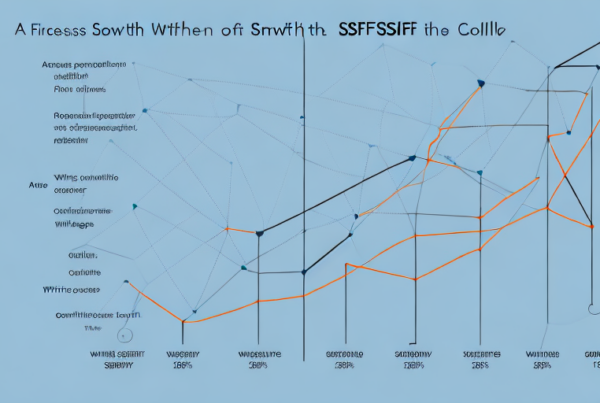Making the right decision between a Self-Managed Super Fund (SMSF) and a Traditional Super Fund is a crucial aspect of your retirement planning. Understanding these two options and the key differences between them is essential to make a well-informed choice. In this article, we’ll explore the pros and cons of SMSFs and Traditional Super Funds, the factors you should consider when making your decision, and ultimately help you decide which is better for you in 2023.
Understanding SMSFs and Traditional Super Funds
Before we dive into the differences between SMSFs and Traditional Super Funds, let’s look at what they are exactly.
What is a Self-Managed Super Fund (SMSF)?
A Self-Managed Super Fund is a retirement fund that is managed by a trustee or a group of trustees, often members of the SMSF itself. SMSFs are regulated by the Australian Taxation Office (ATO) and provide their members with greater control over their retirement savings.
One of the benefits of an SMSF is that members have more control over their investment decisions. They can choose to invest in a wider range of assets, including property, shares, and managed funds. SMSF members can also choose to invest directly in assets, which can lead to greater returns if managed properly.
However, with greater control comes greater responsibility. SMSF trustees are responsible for managing the fund and ensuring that it complies with all legal and regulatory requirements. This can be time-consuming and may require professional advice, which can add to the cost of running an SMSF.
What is a Traditional Super Fund?
Traditional Super Funds are the more traditional way of saving for retirement. Most Australians are familiar with them as they are usually provided by an employer as part of a benefits package. Traditional Super Funds can either be retail or industry funds, and often have a large pool of members. They are publicly offered and managed by professional fund managers.
One of the benefits of a Traditional Super Fund is that members do not need to worry about managing the fund themselves. Professional fund managers make investment decisions on behalf of members, which can lead to more stable returns over the long term.
However, Traditional Super Funds usually offer a limited range of investment options. Members may not be able to invest directly in assets, and may be limited to a pre-set range of investment options.
Key Differences Between SMSFs and Traditional Super Funds
When comparing SMSFs vs. Traditional Super Funds, it’s imperative to note the differences between them.
- Control: SMSFs offer greater control over investment decisions, whereas Traditional Super Funds are managed by professional fund managers.
- Costs: SMSFs can be more expensive to run compared to Traditional Super Funds as they require trustees to do more work, and often need to pay for professional advice.
- Investment Options: SMSFs have more flexibility concerning investment options and strategies, whereas Traditional Super Funds usually limit the investment options to a pre-set range of options.
- Regulation: SMSFs have stricter regulatory requirements than Traditional Super Funds, requiring more administrative work and compliance obligations.
Overall, the decision to choose an SMSF or a Traditional Super Fund will depend on individual circumstances and preferences. While SMSFs offer greater control over investment decisions, they also require more work and come with greater responsibility. Traditional Super Funds, on the other hand, offer more stable returns but limit investment options.
Pros and Cons of SMSFs
Advantages of SMSFs
SMSFs offer several advantages, including:
- Greater Flexibility: SMSFs offer more investment flexibility and the ability to adjust investment strategies quickly to align with market changes or to meet specific investment goals.
- Greater Control: SMSFs provide greater control over how the fund invests, manages money, and ultimately where it is invested.
- Opportunities for Tax Planning: SMSFs offer greater opportunities for tax planning and flexibility in structuring investments potentially to minimise tax liabilities.
One of the biggest advantages of SMSFs is the flexibility they offer. SMSFs allow investors to tailor their investment strategy to their specific needs and goals. For example, if an investor wants to invest in a particular asset class or sector, they can do so with an SMSF. This flexibility can be particularly useful in times of market volatility, as SMSF trustees can adjust their investment strategy quickly to align with market changes.
In addition to greater flexibility, SMSFs also offer greater control over how the fund invests and manages money. This can be particularly attractive to investors who want to take a more hands-on approach to their investments. SMSF trustees can choose to invest in a wide range of assets, including shares, property, and cash. They can also choose to invest directly in individual assets or use managed funds to diversify their portfolio.
Another advantage of SMSFs is the opportunities they offer for tax planning. SMSF trustees can structure their investments in a way that minimises their tax liabilities. For example, they can choose to invest in assets that provide franked dividends or capital gains, which can be taxed at a lower rate than other types of income.
Disadvantages of SMSFs
Despite their advantages, SMSFs also come with drawbacks, including:
- Greater Responsibilities: SMSFs require more work from trustees and can become time-consuming and complex.
- More Costs: SMSFs can be more expensive to establish and administer compared to Traditional Super Funds.
- Greater Consequences for Non-Compliance: SMSFs are subject to stricter regulations requiring more attention to ensure compliance with ATO requirements.
One of the biggest disadvantages of SMSFs is the greater responsibilities they place on trustees. SMSF trustees have a legal obligation to manage the fund in accordance with the law and to act in the best interests of all members. This can be a time-consuming and complex task, particularly for those who are not familiar with the rules and regulations governing SMSFs.
In addition to the greater responsibilities, SMSFs can also be more expensive to establish and administer compared to Traditional Super Funds. SMSFs require the services of professionals such as accountants, auditors, and financial advisers, which can add to the costs of running the fund. This can be particularly challenging for smaller SMSFs, which may struggle to cover these costs.
Finally, SMSFs are subject to stricter regulations than Traditional Super Funds, which can make compliance more challenging. SMSF trustees are required to keep detailed records, prepare financial statements, and lodge an annual tax return. Failure to comply with these requirements can result in penalties and other consequences.
In conclusion, SMSFs offer several advantages, including greater flexibility, control, and opportunities for tax planning. However, they also come with drawbacks, including greater responsibilities, costs, and consequences for non-compliance. It is important for investors to carefully consider their options and seek professional advice before deciding whether an SMSF is right for them.
Pros and Cons of Traditional Super Funds
When it comes to retirement planning, one of the most popular options is investing in a Super Fund. Traditional Super Funds have been around for a long time, and while they offer several advantages, they also come with their own set of drawbacks.
Advantages of Traditional Super Funds
Traditional Super Funds offer several advantages, including:
- Professional Investment Management: Traditional Super Funds are managed by investment professionals who put a lot of work into managing the investments of the fund. This means that you can trust that your money is being invested wisely and in a way that is likely to generate good returns.
- Lower Fees: Traditional Super Funds often have lower fees than SMSFs due to economies of scale. This means that you can save money on fees and potentially earn higher returns on your investment.
- Regulation and Protection: Like SMSFs, Traditional Super Funds are regulated by the ATO and offer member protection against unscrupulous fund managers. This means that you can trust that your money is being invested in a way that is safe and secure.
Disadvantages of Traditional Super Funds
Despite their advantages, Traditional Super Funds also come with several drawbacks, including:
- Less Control: Traditional Super Funds offer limited control over how the fund is invested. This means that you may not be able to invest your money in the way that you would like or make changes to your investment strategy as easily as you would with an SMSF.
- Less Flexibility: Traditional Super Funds offer less flexibility regarding adjusting investment strategies or allocation of funds to alternative assets. This means that you may not be able to take advantage of investment opportunities as easily as you would with an SMSF.
- Lack of Transparency: Traditional Super Funds often lack transparency in the communication of investment decisions and the role of fund managers. This means that you may not always know how your money is being invested or who is making the investment decisions.
Overall, Traditional Super Funds can be a good option for those who want a simple and straightforward approach to retirement planning. However, if you want more control and flexibility over your investments, an SMSF may be a better option for you.
It’s important to do your research and carefully consider your options before making any decisions about your retirement savings. Talking to a financial advisor can also be helpful in determining the best approach for your individual needs and goals.
Factors to Consider When Choosing Between SMSFs and Traditional Super Funds
Your Financial Goals
The key consideration when choosing between an SMSF and a Traditional Super Fund is your financial goals. If you prefer to take a more hands-on approach and seek greater control and flexibility over your retirement savings, then an SMSF may be a better choice. On the other hand, if you are seeking a professional approach to investment management and are comfortable with letting someone else make decisions for you, then Traditional Super Funds are a great option.
Investment Options and Flexibility
The second factor to consider when choosing between SMSFs and Traditional Super Funds is investment options and flexibility. SMSFs offer more flexibility in their investment options, whereas Traditional Super Funds offer a limited range of investment options. If you want to invest in specific assets outside of the options offered by Traditional Super Funds, then an SMSF may be a better option.
Time Commitment and Management Responsibilities
The third factor to consider when choosing between SMSFs and Traditional Super Funds is time commitment and management responsibilities. SMSFs can be more time-consuming and require significant effort to set up and manage. Conversely, Traditional Super Funds do not require as much time commitment and management responsibility.
Costs and Fees
The fourth factor to consider when choosing between SMSFs and Traditional Super Funds is costs and fees. SMSFs can be more expensive to run, given the trustees must undertake more work, and often need to pay for professional advice. Alternatively, Traditional Super Funds have lower fees due to their economies of scale.
Tax Implications
The final factor to consider when choosing between SMSFs and Traditional Super Funds is tax implications. SMSFs offer higher tax-planning opportunities and more flexibility in structuring investments to potentially minimize tax liabilities. Traditional Super Funds, on the other hand, may provide a lower-tax advantage depending on investment and personal profiles.
Conclusion
Choosing between an SMSF or Traditional Super Fund is a crucial decision that requires careful consideration of your financial goals, investment options and flexibility, time commitment, costs and fees, and tax implications. Understanding the key differences between the two options is essential to make a well-informed choice. Therefore, choose the option that best aligns with your financial goals, investment preferences, and personal circumstances.




